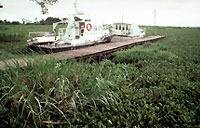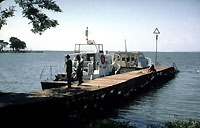| Entomology Home |

an overview
of biological control research in CSIRO Entomology
| Biological Control Home | ||
|
|
||
| Aquatic Weeds » | ||
|
|
||
|
|
||
| Biopesticides | ||
| Entomology Home | ||
| Biological Control Home > Classical Biocontrol > Aquatic weeds |
Aquatic weeds
Aquatic weeds can bring rivers and lakes to a standstill, destroying their ecology and also the livelihoods of communities who depend on them. Two of the most notorious are salvinia, Salvinia molesta, and water hyacinth, Eichhornia crassipes. They have an incredible ability to spread. Salvinia can double its size every 2-3 days and mechanical harvesting and herbicidal control can be too slow to keep up. Neither is practical nor affordable in many wetland situations. Environmental sensitivities often prevent the use of herbicides. The success of biological control has been spectacular. In many countries, water ways that were once unusable are now returned to full use and the agents have reduced the weeds to relatively insignificant populations. The expertise developed has been passed on through collaborative research and technology transfer projects with organisations in Australia, Asia, the Pacific, Africa and the Americas. The spectacular
results are long-term, sustainable (require little or no additional
inputs), environmentally friendly (non-polluting) and affordable
(repeat application is not required). |


